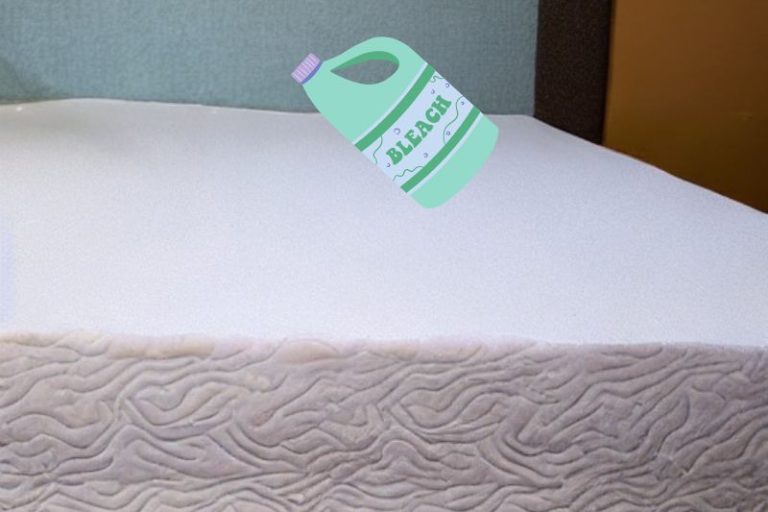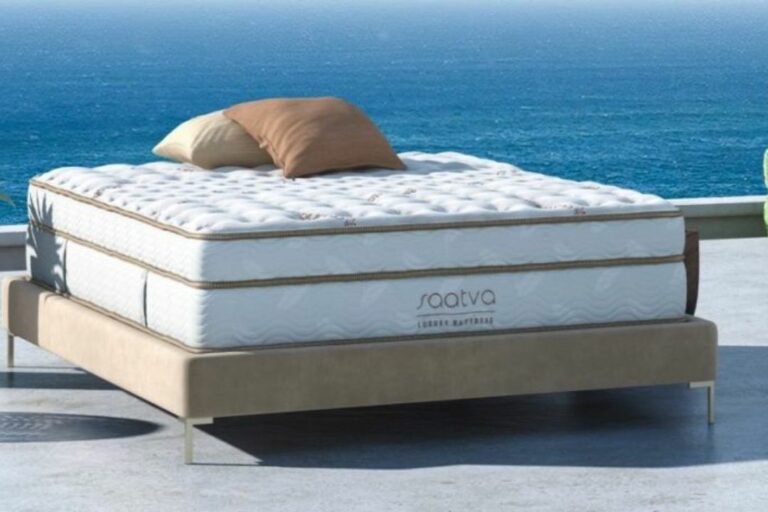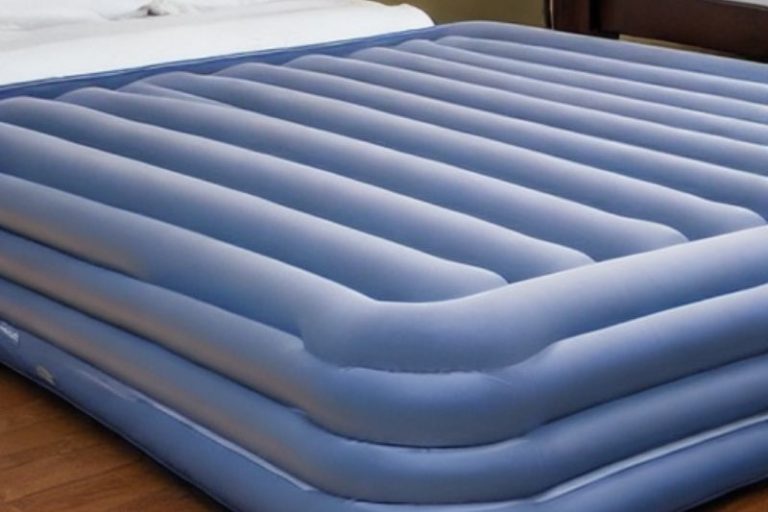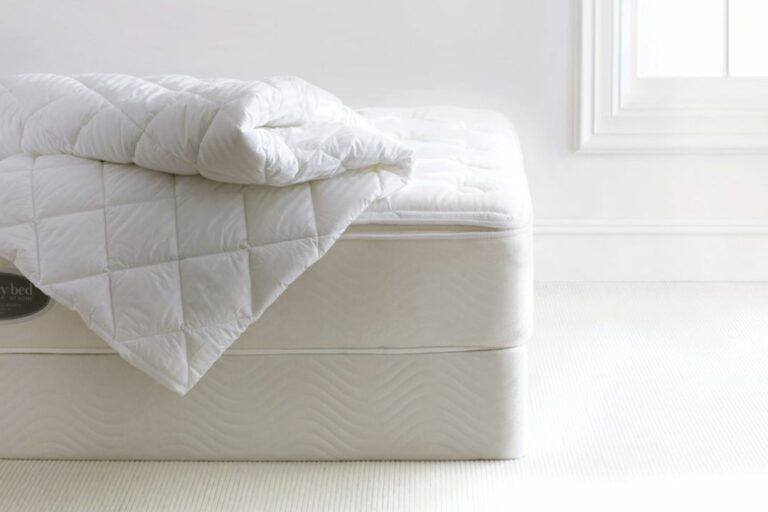Can Electric Blankets Cause Blood Clots? (Debunking the Myth!)
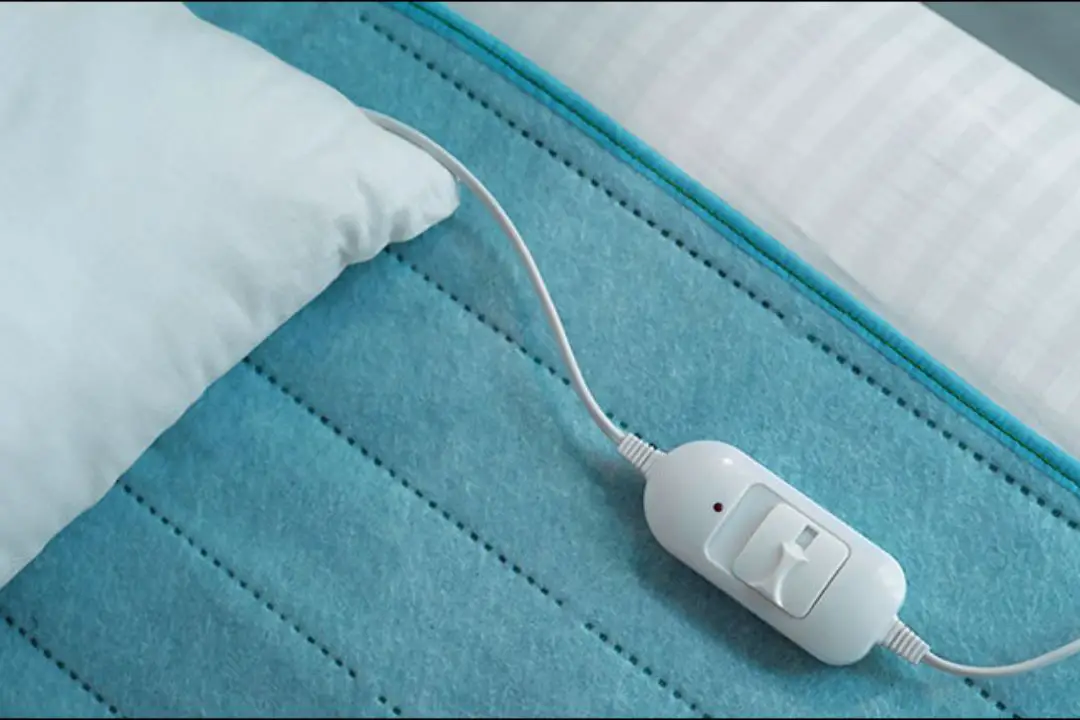
Can Electric Blankets Cause Blood Clots?
Electric blankets do not directly cause blood clots. Blood clots are mainly influenced by genetics, sedentary lifestyle, medical conditions, and medications. The heat from electric blankets is not a significant factor in blood clot formation.
Those with clotting or circulation issues should consult healthcare professionals before using electric blankets, prioritizing proper circulation and seeking personalized medical advice for their well-being
While the idea of blood clots can be concerning, it’s important to understand the facts before jumping to conclusions.
First and foremost, there is currently no scientific evidence to suggest that using an electric blanket directly causes blood clots.
Blood clots typically form due to various factors, including immobility, certain medical conditions, and genetic predisposition.
However, it’s worth noting that heat in general can potentially increase the risk of blood clot formation, as it may lead to the dilation of blood vessels.
That being said, the use of electric blankets is generally considered safe for healthy individuals. It is important to follow the manufacturer’s instructions and avoid overheating by using the blanket on a low or moderate setting.
Additionally, it is advisable to use electric blankets for a limited duration and avoid leaving them on for an extended period of time.
If you have any concerns about blood clotting or underlying health conditions, it’s always a good idea to consult with your healthcare provider for personalized advice.
So, while concerns about blood clots and electric blankets may arise, there is no direct evidence linking the two.
When used correctly and in moderation, electric blankets can provide a cozy and comforting way to keep warm during colder months.
As with any health-related topic, it’s important to stay informed and consult with a medical professional if you have specific concerns or pre-existing conditions.
Understanding Blood Clots:
When it comes to the topic of blood clots, it’s important to have a basic understanding of what they are and how they can potentially form in our bodies.
Blood clots, medically known as thrombosis, occur when blood thickens and forms a gel-like substance.
This clump can block blood flow and potentially lead to serious health issues if not addressed.
Here are a few key points to better grasp blood clots:
- Risk Factors: Certain factors can increase a person’s likelihood of developing blood clots, including obesity, smoking, sedentary lifestyle, and certain medical conditions like cancer or heart diseases. It’s worth mentioning that the use of electric blankets alone is not considered a direct risk factor for blood clots.
- Formation Process: Blood clots usually form in response to an injury in blood vessels, which triggers a complex series of reactions. The body’s natural response to injury is to form a clot to stop bleeding and aid in the healing process. However, if the clotting process occurs when it’s not needed, or if clotting mechanisms are disrupted, it can lead to a problematic situation.
- Types of Blood Clots: There are two primary types of blood clots: arterial and venous. Arterial clots form in the arteries and can restrict blood flow to vital organs, potentially causing a heart attack or stroke. Venous clots, on the other hand, develop in the veins and are more commonly associated with deep vein thrombosis (DVT) or pulmonary embolism (PE).
- Symptoms and Complications: Symptoms of blood clots may vary depending on their location and severity. Common signs include swelling, pain, tenderness, warmth, and redness in the affected area. Complications associated with blood clots can range from mild to life-threatening, depending on the case. It’s important to seek medical attention if there is suspicion of a blood clot.
Remember, while electric blankets may provide warmth and comfort, there is no concrete evidence to suggest that they directly cause blood clots.
If you have specific concerns about blood clots or any other health-related matters, it is always advisable to consult with a healthcare professional who can provide accurate information tailored to your unique circumstances.
| Blood Clot Types | |
|---|---|
| Arterial Clots | Form in arteries |
| Venous Clots | Form in veins |
| Location of Symptoms | Swelling, pain, tenderness, redness |
| Complications | Range from mild to life-threatening |
What Are Electric Blankets?
Electric blankets are a cozy and convenient way to keep warm during the colder months.
They are blankets that are equipped with electrical heating elements that produce warmth when plugged into an electrical outlet.
These blankets typically have adjustable settings to control the level of heat generated.
Here are some key points to understand about electric blankets:
- Heating Elements: Electric blankets are made up of thin electrical wires or heating elements that are distributed evenly throughout the blanket. These elements generate heat when the blanket is switched on.
- Controls and Settings: Electric blankets come with controls that allow users to adjust the temperature according to their comfort level. Some blankets offer multiple heating zones, giving users the flexibility to customize the warmth for different parts of the body.
- Safety Measures: Modern electric blankets are designed with safety features to prevent overheating and potential fire hazards. They often include an automatic shut-off mechanism, which turns off the blanket after a certain period of time or if it detects an abnormal increase in temperature.
- Material and Construction: Electric blankets are available in various materials, including polyester, fleece, or microfiber. They have an outer fabric layer that encases the heating elements, providing insulation and comfort. It is important to choose a blanket that is soft, durable, and easy to maintain.
- Different Types: Electric blankets come in different forms, including blankets for beds, throws for couches, or wraps for specific body parts like shoulders or feet. Each type serves a different purpose and offers specific features tailored to meet the user’s needs.
It is important to follow the manufacturer’s instructions and guidelines when using electric blankets to ensure safe and efficient usage.
Now that we have a better understanding of what electric blankets are, let’s explore whether they can cause blood clots.
How Do Electric Blankets Work?
Electric blankets are a cozy and convenient way to keep warm during chilly nights.
But have you ever wondered how they actually work? Let’s dive in and explore the inner workings of these toasty wonders.
- Heating elements: Electric blankets are equipped with heating elements that are typically made of thin, insulated wires. These wires are strategically woven throughout the blanket to distribute heat evenly across its surface.
- Power source: To power the heating elements, electric blankets are connected to an electrical outlet via a cord. This cord is detachable and often includes a controller with various heat settings, allowing you to adjust the temperature to your liking.
- Safety measures: Electric blankets are designed with safety features to prevent overheating and potential hazards. These safety measures include automatic shutoff timers that turn off the blanket after a certain period of time and temperature sensors that monitor and regulate the heat.
- Warming up: When an electric blanket is turned on, an electric current flows through the heating elements, which then convert electrical energy into heat. As the wires warm up, they radiate heat and warm up the surrounding fabric, providing a cozy and comfortable environment.
But how safe are electric blankets when it comes to our health, particularly in relation to blood clots? Let’s find out in the next section.
| Electric Blanket Working Mechanism |
|---|
| – Heating elements made of insulated wires |
| – Power source connected to an electrical outlet |
| – Safety measures include automatic shutoff timers and temperature sensors |
| – Wires convert electrical energy into heat, warming up the surrounding fabric |
Can Electric Blankets Increase Blood Clot Risk?
Electric blankets are a cozy and popular choice for keeping warm during the cold winter months.
However, there have been concerns raised about whether they can increase the risk of developing blood clots.
In this section, we will explore this topic to provide you with a better understanding.
The Connection between Electric Blankets and Blood Clots:
- Heat and Blood Flow: Electric blankets generate heat, and some argue that this prolonged exposure to warmth can impact blood flow. The theory is that the heat from the blanket can cause blood vessels to constrict, potentially leading to a higher risk of blood clots.
- Limited Evidence: While this theory may sound plausible, it’s important to note that there is currently limited scientific evidence directly linking electric blankets to increased blood clot risk. Research in this area is still ongoing, and no conclusive findings have been made.
- Individual Factors: It’s crucial to consider individual factors that can influence blood clot risk. Factors like age, immobility, obesity, a history of blood clots, and certain medical conditions such as deep vein thrombosis (DVT) can significantly contribute to the likelihood of developing blood clots.
Staying Safe and Minimizing Risks
To ensure your safety and minimize any potential risks associated with electric blankets, here are some practical tips to keep in mind:
- Consult with your healthcare professional if you have concerns about using electric blankets, especially if you have a history of blood clots or other related conditions.
- Use your electric blanket responsibly by following the manufacturer’s instructions and guidelines.
- Avoid falling asleep with the electric blanket turned on to prevent prolonged exposure to heat and possible discomfort.
- If you experience any unusual symptoms while using an electric blanket, such as pain, swelling, or redness in your limbs, seek medical attention promptly.
Although a definitive verdict on the direct impact of electric blankets on blood clot risk is still pending, being aware of potential risks and taking necessary precautions is key.
As with most things in life, moderation and responsible use are essential when enjoying the comfort of an electric blanket.
Remember, if you have any concerns or questions, it’s always wise to consult with a healthcare professional or your doctor for personalized advice.
| Pros | Cons |
|---|---|
| Provides warmth and comfort during cold weather | Limited evidence linking electric blankets to blood clot risk |
| Easy to use and widely available | Individual factors have a more significant impact on blood clot risk |
| Can be a cost-effective option for staying warm | Responsible use and moderation are crucial for minimizing risks |
| Can potentially soothe muscle pain and promote relaxation | If any unusual symptoms occur, seeking medical attention is recommended |
Research on Electric Blankets and Blood Clots:
When it comes to the question of whether electric blankets can cause blood clots, it’s important to turn to the available research for answers.
While there is no definitive evidence linking electric blankets directly to blood clots, a few studies have explored potential associations. Here’s a summary of the research findings:
- Temperature and Blood Flow: Some research suggests that prolonged exposure to high temperatures, such as those generated by electric blankets, could potentially affect blood flow and increase the risk of blood clots. However, these studies have mostly focused on saunas or hot baths rather than specifically on electric blankets.
- Limited Studies: There is a lack of comprehensive studies solely dedicated to investigating the relationship between electric blankets and blood clots. Most studies that have evaluated the risk of blood clots in relation to heat exposure have focused on other heat sources, leaving the specific impact of electric blankets relatively unexplored.
- Underlying Health Conditions: It is worth noting that certain underlying health conditions, such as deep vein thrombosis (DVT) or a history of blood clotting disorders, can increase the risk of blood clots. If you have any such conditions, it’s important to consult with your healthcare provider before using an electric blanket or exposing yourself to extended periods of heat.
- Balancing Comfort and Safety: While the direct link is yet to be established, it’s always a good idea to practice moderation and prioritize safety. If you choose to use an electric blanket, consider the following precautions to minimize potential risks:
- Follow manufacturer instructions: Read and adhere to the guidelines provided by the electric blanket manufacturer.
- Avoid excessive heat: Use your electric blanket on a warm but comfortable setting, and avoid cranking up the heat to the maximum.
- Regular usage breaks: Do not continuously use electric blankets for prolonged periods. Take regular breaks to allow your body to regulate its temperature naturally.
It is important to remember that each individual’s health and circumstances are unique. If you have concerns about using electric blankets or potential health risks, it is always prudent to consult with a medical professional for personalized advice and guidance.
Preventing Blood Clots with Electric Blankets:
Electric blankets are cozy and can provide warmth during cold nights.
However, there have been concerns about whether they can increase the risk of blood clots.
While there is no direct evidence linking electric blankets to blood clots, it’s important to take some precautions to minimize any potential risks.
Here are a few tips to consider:
- Moderate Temperature: Avoid setting your electric blanket at high temperatures for extended periods. Opt for a comfortable and moderate heat setting instead, especially when you are going to sleep.
- Limited Use: It’s recommended not to use electric blankets for extended periods. Limit usage to a couple of hours at a time to reduce potential overheating and to allow your body to regulate its temperature naturally.
- Proper Maintenance: Keep your electric blanket clean and in good condition. Follow the manufacturer’s instructions for cleaning, and ensure it is stored properly when not in use. Regularly check the wiring and connections to ensure they are in good working order.
- Individual Considerations: If you have any pre-existing medical conditions that increase the risk of blood clot formation, such as deep vein thrombosis (DVT), it is advisable to consult with your healthcare provider before using an electric blanket. They can provide personalized guidance based on your specific situation.
By following these simple guidelines, you can continue enjoying the warmth and comfort of your electric blanket without undue concerns about blood clot-related risks.
| Tips for Preventing Blood Clots with Electric Blankets |
|---|
| – Set the temperature at a moderate level |
| – Use the blanket for limited periods at a time |
| – Keep the blanket clean and well-maintained |
| – Seek medical advice if you have pre-existing conditions |
Remember, there is no need to panic about using electric blankets. Just use them responsibly and make informed choices to ensure your comfort and safety.
Tips for Safe Use of Electric Blankets:
When it comes to using electric blankets, taking safety precautions can go a long way in minimizing any potential risks.
Here are a few tips to ensure safe use:
- Buy a quality electric blanket: Opt for a blanket that meets safety standards and is approved by reputable organizations. Look for products that have undergone testing to ensure they meet electrical safety regulations.
- Inspect your blanket regularly: Before use, carefully examine your electric blanket for any signs of damage such as frayed wires, exposed heating elements, or scorch marks. If you notice any issues, it’s best to replace the blanket to avoid potential hazards.
- Adhere to manufacturer’s instructions: Always read and follow the guidelines provided by the manufacturer. This includes proper usage, cleaning instructions, and storage recommendations. Pay special attention to the temperature settings and duration of use suggested by the manufacturer.
- Avoid overheating: It’s essential to use your electric blanket responsibly and avoid excessive heating. The blanket should provide warmth without causing discomfort or making you feel too hot. Overheating can lead to skin irritation, dehydration, and other potential health problems.
- Use the blanket on top of you: Place the electric blanket on top of your regular blanket or bedsheet instead of underneath. This helps to keep the heat distributed evenly and prevents excessive direct contact between the electric blanket and your skin.
- Don’t fold or bunch up the blanket: Ensure the electric blanket is spread out evenly and not folded or bunched up. Folding or bunching can trap heat and increase the risk of overheating or potential fire hazards.
Remember, while electric blankets are generally safe when used correctly, it’s crucial to prioritize your safety by selecting a quality product, inspecting it regularly, and following the manufacturer’s instructions.
By practicing these simple tips, you can enjoy the warmth and comfort of your electric blanket while minimizing any potential risks.
| Tips for Safe Use of Electric Blankets | |
|---|---|
| 1. | Buy a quality electric blanket |
| 2. | Inspect your blanket regularly |
| 3. | Adhere to manufacturer’s instructions |
| 4. | Avoid overheating |
| 5. | Use the blanket on top of you |
| 6. | Don’t fold or bunch up the blanket |
Alternative Heating Options:
When it comes to staying warm during colder months, electric blankets may not be the only option.
If you’re concerned about potential risks like blood clots, here are some alternative heating options to consider:
- Layer up: Instead of relying solely on a heated blanket, try layering your clothing to trap warmth in. This can include wearing thermal undergarments, thick socks, sweaters, and jackets. Don’t forget a cozy hat and gloves!
- Insulate your home: Improving the insulation of your home can help retain warmth and reduce the need for excessive heating. Consider sealing any air leaks, insulating windows and doors, and using draft stoppers to keep cold air out.
- Portable space heaters: These devices can provide targeted warmth in specific areas of your home. Look for energy-efficient options with safety features like automatic shut-off in case they tip over. Remember to keep flammable objects away from the heater and never leave it unattended.
- Warm beverages and food: Sip on hot drinks like herbal tea, hot chocolate, or coffee to warm up from the inside. Enjoying warm meals and soups can also provide comfort and heat your body.
- Hot water bottles: Fill up a hot water bottle with warm water and place it under the covers before bed to keep your bed toasty. Just make sure to use a proper cover or towel to prevent direct contact with your skin.
- Warm clothing and blankets: Opt for cozy wool or fleece blankets to snuggle under. Additionally, invest in thermal or flannel sheets that can keep you warm throughout the night.
Remember, these alternative heating options may not provide the same level of consistent warmth as electric blankets, but they can be safer and help alleviate concerns about blood clots. Stay warm and cozy while prioritizing your well-being!
| Option | Description |
|---|---|
| Layer up | Wear multiple layers of clothing to trap warmth in |
| Insulate your home | Improve your home’s insulation to retain warmth and reduce the need for excessive heating |
| Portable space heaters | Use energy-efficient space heaters with safety features |
| Warm beverages and food | Enjoy hot drinks and warm meals to heat up your body from the inside |
| Hot water bottles | Use hot water bottles to warm your bed, ensuring proper cover or towel protection |
| Warm clothing and blankets | Opt for cozy blankets and thermal sheets to keep warm throughout the night |
Remember, these alternative heating options may not provide the same level of consistent warmth as electric blankets, but they can be safer and help alleviate concerns about blood clots.
Stay warm and cozy while prioritizing your well-being!
Consulting a Healthcare Professional:
When it comes to your health, it’s important to seek the advice of a healthcare professional for personalized guidance.
If you have concerns about using electric blankets and their potential effects on blood clot formation, scheduling a consultation with a healthcare professional is the best course of action.
They can provide you with the most accurate and up-to-date information based on your specific medical history and circumstances.
Here are a few reasons why consulting a healthcare professional is beneficial:
- Individual assessment: A healthcare professional can evaluate your unique health profile, taking into account factors such as your medical history, existing conditions, and any medications you may be taking. This personalized assessment allows them to provide tailored advice regarding electric blanket use and its potential impact on blood clot risk.
- Expert knowledge: Healthcare professionals, such as doctors or nurses, possess specialized knowledge and training in various medical fields. Their expertise qualifies them to provide reliable information on the topic. They can explain any potential risks associated with electric blankets and help you make an informed decision based on your situation.
- Existing conditions: If you have pre-existing conditions, like deep vein thrombosis (DVT) or a history of blood clots, it’s especially important to consult a healthcare professional before using an electric blanket. They can assess the potential risks and advise you on alternative options or precautions to consider.
- Recent research: Healthcare professionals stay updated on the latest developments in medical research. They can inform you of any recent studies or findings related to the use of electric blankets and blood clot formation. This can help you make more informed decisions about your health and well-being.
Remember, while online resources can be informative, they may not provide the accurate or personalized advice you need.
Therefore, seeking professional medical guidance is strongly recommended for any concerns related to electric blankets and blood clot risk.
Please note that the information provided in this article is for informational purposes only and should not replace professional medical advice.
It’s always best to consult with a healthcare professional for personalized guidance regarding your specific health concerns.
Conclusion: Can Electric Blankets Cause Blood Clots?
In conclusion, there is no scientific evidence to suggest that electric blankets directly cause blood clots.
Blood clot formation is influenced by factors such as genetics, lifestyle, underlying medical conditions, and medications.
The heat generated by electric blankets is not considered a significant risk factor for blood clot formation.
However, individuals with existing clotting or circulation issues should seek personalized medical advice before using electric blankets or other heating devices to ensure their well-being and proper circulation.

